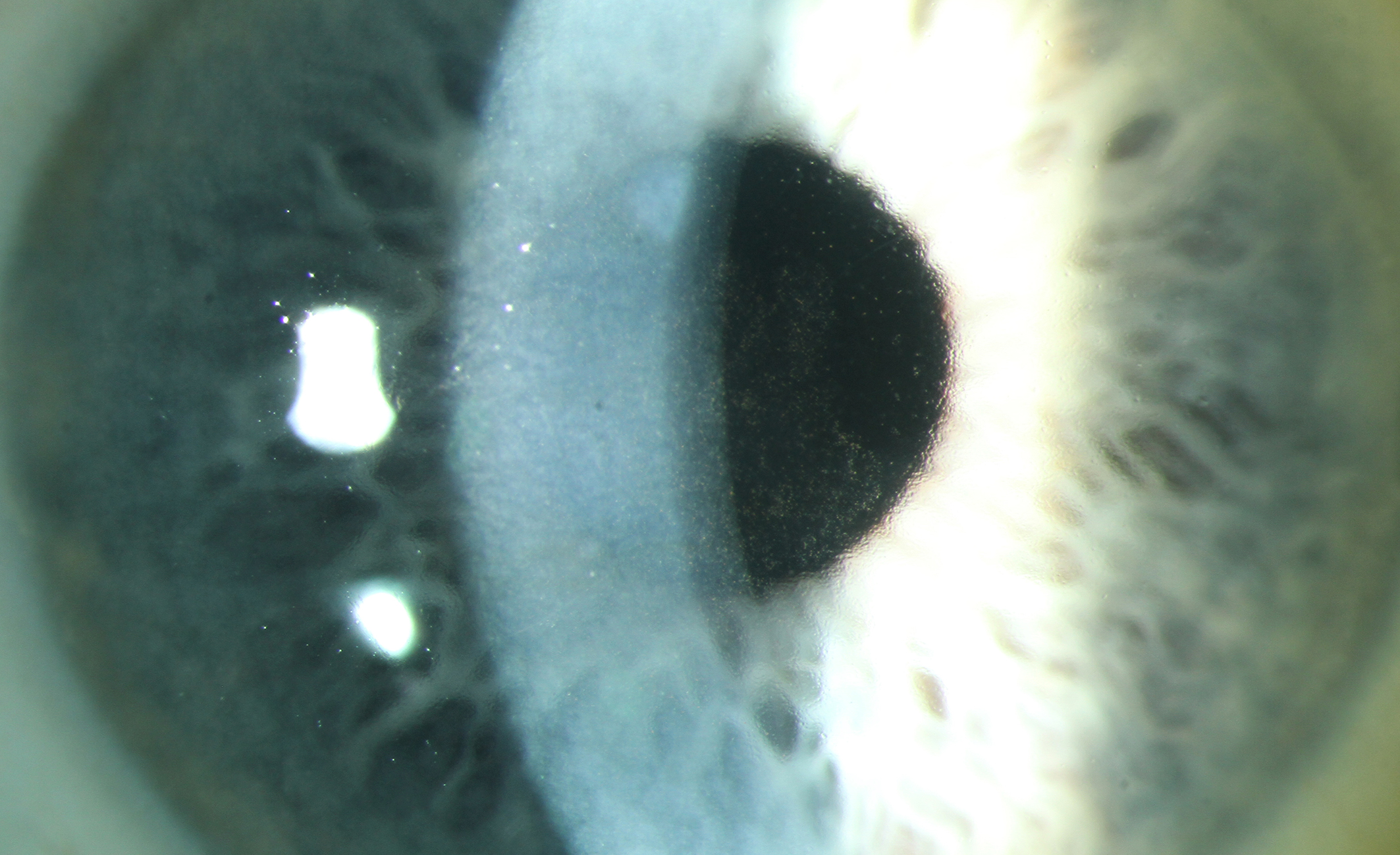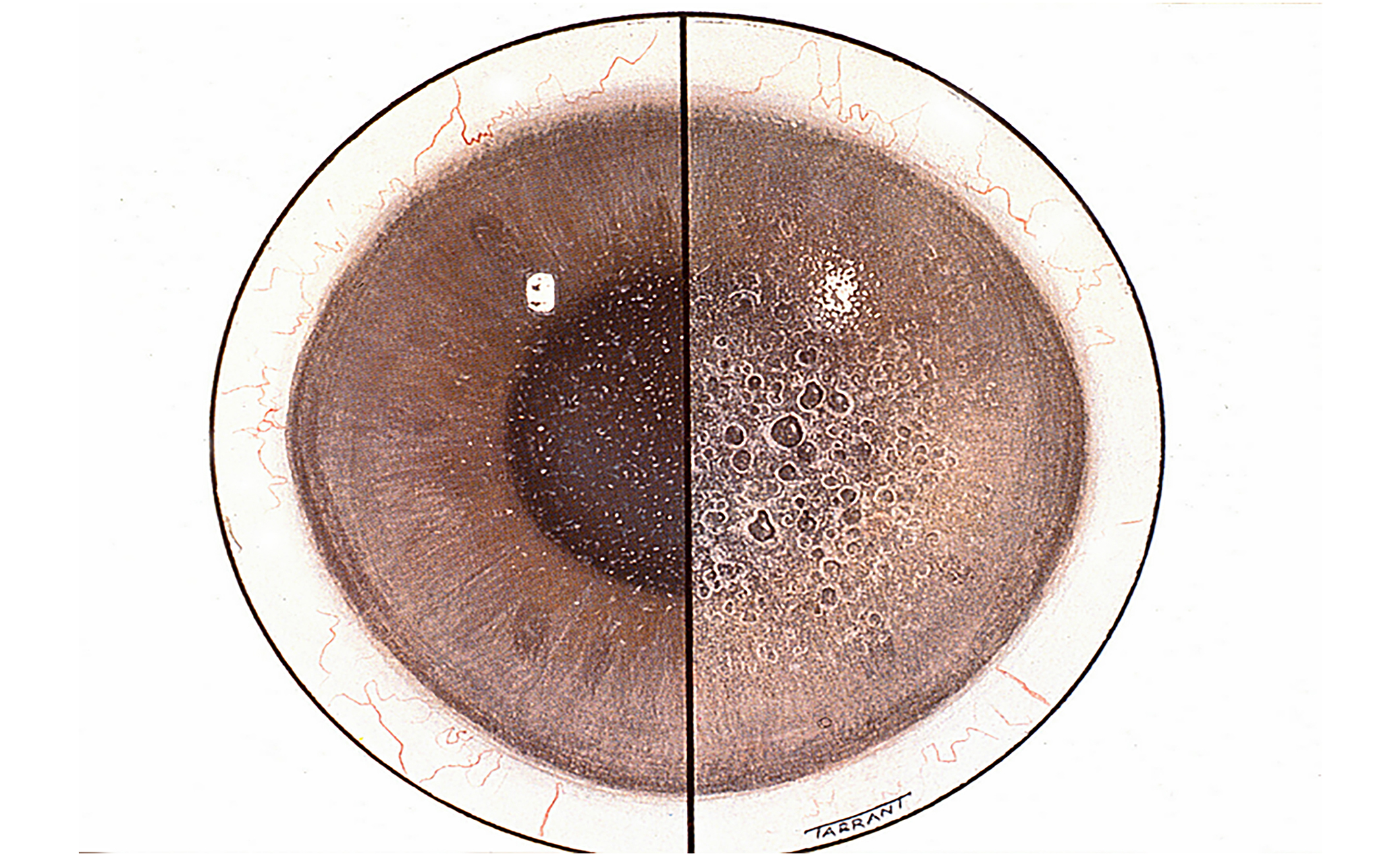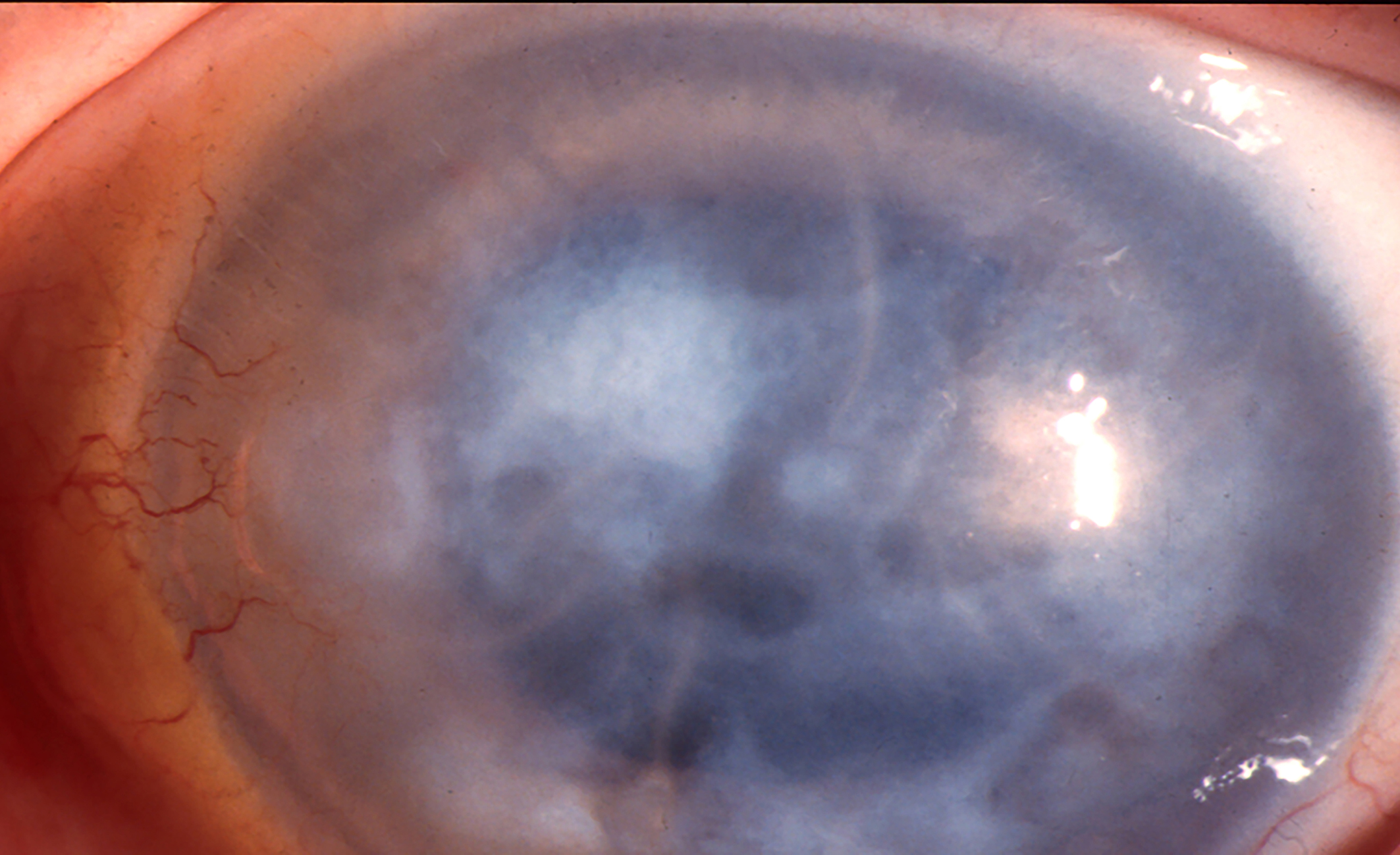The human cornea consists of several layers of tissue. The innermost layer forms a layer of cells, the so-called endothelium. In the case of Fuchs's disease, there are individual defects in this cell structure, like holes in Swiss cheese.
These are caused by wart-shaped changes in the balsal membrane, the so-called guttae. If there are too many defects, the cornea swells and becomes cloudy. More water passively enters the cornea than can be actively pumped out. However, if the cornea is cloudy, the patient can no longer see clearly.
Endothelial dystrophy is inherited in many families. The cause of this disease cannot be treated. Decongestant eye drops sometimes help temporarily. In advanced symptoms a cornea transplant, i.e. a penetrating keratoplasty or today mostly Descemet Membrane Endothelial Keratoplasty (DMEK) are carried out.
Endothelial mirror microscopy can be used to examine cell damage more closely and to better estimate the risk of an operation. If Fuchs' dystrophy is suspected, we therefore carry out the endothelial examination as a precautionary measure before an operation.





